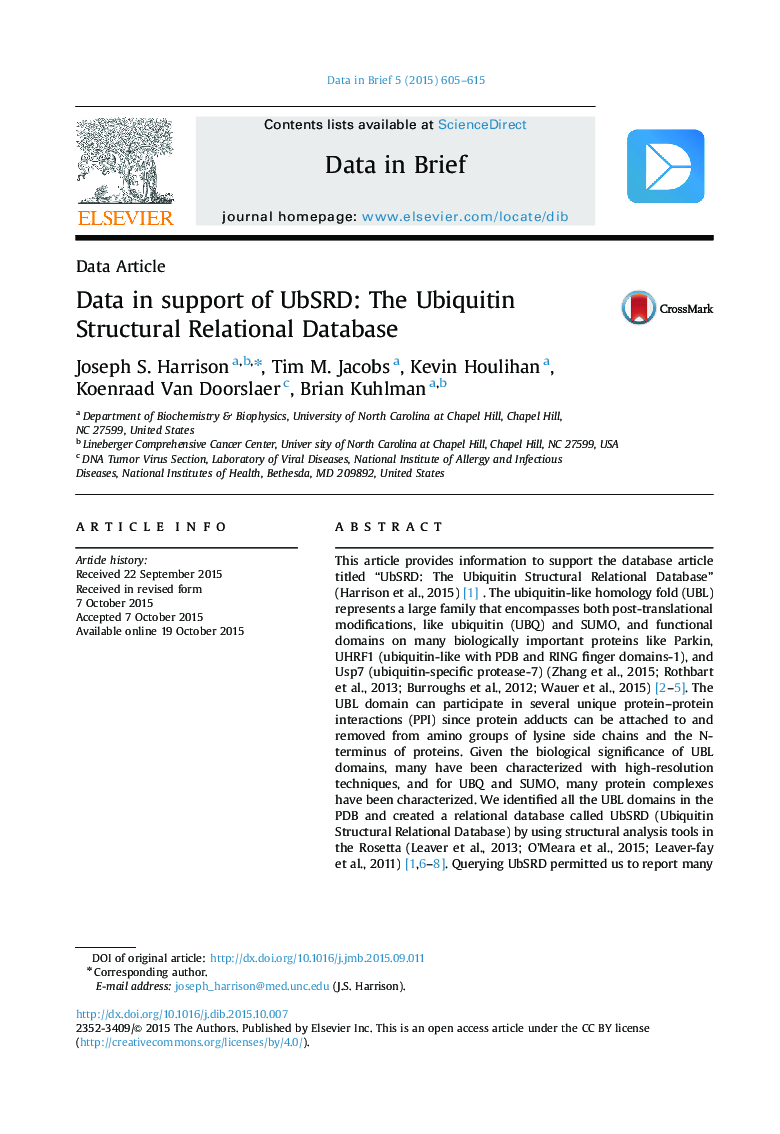| Article ID | Journal | Published Year | Pages | File Type |
|---|---|---|---|---|
| 174912 | Data in Brief | 2015 | 11 Pages |
This article provides information to support the database article titled “UbSRD: The Ubiquitin Structural Relational Database” (Harrison et al., 2015) [1] . The ubiquitin-like homology fold (UBL) represents a large family that encompasses both post-translational modifications, like ubiquitin (UBQ) and SUMO, and functional domains on many biologically important proteins like Parkin, UHRF1 (ubiquitin-like with PDB and RING finger domains-1), and Usp7 (ubiquitin-specific protease-7) (Zhang et al., 2015; Rothbart et al., 2013; Burroughs et al., 2012; Wauer et al., 2015) [2], [3], [4] and [5]. The UBL domain can participate in several unique protein–protein interactions (PPI) since protein adducts can be attached to and removed from amino groups of lysine side chains and the N-terminus of proteins. Given the biological significance of UBL domains, many have been characterized with high-resolution techniques, and for UBQ and SUMO, many protein complexes have been characterized. We identified all the UBL domains in the PDB and created a relational database called UbSRD (Ubiquitin Structural Relational Database) by using structural analysis tools in the Rosetta (Leaver et al., 2013; O’Meara et al., 2015; Leaver-fay et al., 2011) [1], [6], [7] and [8]. Querying UbSRD permitted us to report many quantitative properties of UBQ and SUMO recognition at different types interfaces (noncovalent: NC, conjugated: CJ, and deubiquitanse: DB). In this data article, we report the average number of non-UBL neighbors, secondary structure of interacting motifs, and the type of inter-molecular hydrogen bonds for each residue of UBQ and SUMO. Additionally, we used PROMALS3D to generate a multiple sequence alignment used to construct a phylogram for the entire set of UBLs (Pei and Grishin, 2014) [9]. The data described here will be generally useful to scientists studying the molecular basis for recognition of UBQ or SUMO.
